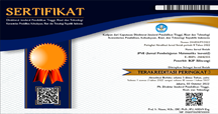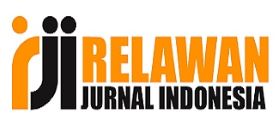PENGARUH GENDER TERHADAP KEMAMPUAN BERPIKIR KREATIF SISWA SMP YANG TELAH MEMPEROLEH PENDEKATAN RME
DOI:
https://doi.org/10.22460/jpmi.v5i1.p%25pKeywords:
Creative Thinking Skills, Gender, RME ApproachAbstract
References
Afandi, A. (2016). Profil Penalaran Deduktif Siswa Smp Dalam Menyelesaikan Masalah Geometri Berdasarkan Perbedaan Gender. APOTEMA : Jurnal Program Studi Pendidikan Matematika, 2(1), 8–21. https://doi.org/10.31597/ja.v2i1.123
Dilla, S. C., Hidayat, W., & Rohaeti, E. E. (2018). Faktor Gender dan Resiliensi dalam Pencapaian Kemampuan Berpikir Kreatif Matematis Siswa SMA. Journal of Medives : Journal of Mathematics Education IKIP Veteran Semarang, 2(1), 129. https://doi.org/10.31331/medives.v2i1.553
Eftafiana, S. (2018). Meningkatkan Kemampuan Berpikir Kreatif Matematik dan Motivasi Belajar Siswa SMP Menggunakan Pendekatan CPS Melalui Model Pembelajaran STAD. IKIP Siliwangi Bandung.
Geary, D. C. (2000). Sex Differences in Spatial Cognition, Computational Fluency, and Arithmetical Reasoning. Journal of Experimental Child Psychology, 77(4), 337–353. https://doi.org/10.1006/jecp.2000.2594
Hasan, A. (2017). Pengaruh Pendekatan Rme Terhadap Kemampuan Representasi Matematis Dan Kepercayaan Diri Siswa. Jurnal Pena Ilmiah, 2(1), 751–760. https://doi.org/10.17509/jpi.v2i1.11211
Indrawati, N., & Tasni, N. (2017). Analisis Kemampuan Pemecahan Masalah Berdasarkan Tingkat Kompleksitas Masalah dan Perbedaan Gender. Saintifik, 2(1), 16–25. https://doi.org/10.31605/saintifik.v2i1.92
Junaidi. (2020). Meningkatkan Kemampuan Berpikir Kreatif Dan Self-Concept Siswa SMP di Kabupaten Pidie Jaya Dengan Pembelajaran Kontekstual Berbantuan Geogebra. Jurnal Numeracy: Jurnal Matematika Dan Pendidikan Matematika, 7(2), 5–24.
Karyuniati, E. (2019). Pengaruh Pendekatan Creative Problem Solving Terhadap Kemampuan Berpikir Kreatif Matematik Dan Kemandirian Belajar Siswa SMP. Journal on Education, 1(3), 01(03), 355–365.
Legowo, Y. A. S. (2017). Pengaruh Gender Terhadap Kemampuan Berpikir Kreatif Matematis Siswa. Jurnal Wawasan Pengembangan Pendidikan, 7(1), 56–61.
Martono, N. (2019). METODE PENELITIAN KUANTITATIF Analisis Isi dan Analisis Data Sekunder (S. P. T. Utami (ed.); kedua). Jakarta: PT Rajagrafindo PERSADA.
Novianti, F., &, & Yunianta, T. N. H. (2018). Analisis Kemampuan Berfikir Kreatif Siswa SMP Dalam Menyelesaikan Soal Matematika Pada Materi Bentuk Aljabar Yang Ditinjau Dari Perbedaan Gender. Jurnal Maju, 5(1), 120–132.
Prihatiningsih, M., & Ratu, N. (2020). Analisis Tingkat Berpikir Kreatif Siswa Ditinjau Dari Gaya Kognitif Field Dependent dan Field Independent. Jurnal Cendekia : Jurnal Pendidikan Matematika, 4(1), 353–364. https://doi.org/10.31004/cendekia.v4i2.218
Purwanti, K. L. (2016). Perbedaan Gender Terhadap Kemampuan Otak Kanan Pada Siswa. Jurnal Sawwa, 9(1), 107–121.
Santrock, J. W. (2014). ADOLESCENCE: Perkembangan Remaja (keenam). Jakarta: Erlangga.
Siswono, T., & Novitasari, W. (2017). Meningkatkan Kemampuan Berpikir Kreatif Siswa Melalui Pemecahan Masalah Tipe â€What’s Another Wayâ€. Jurnal Transformasi, 1, 3.
Suprapto, S., & Zubaidah, S. (2018). Pengaruh gender terhadap keterampilan berpikir kreatif siswa pada pembelajaran biologi. Jurnal Cendekia: Jurnal Pendidikan Matematika, 1, 325–329. http://journal.um.ac.id/index.php/jptpp/article/view/10642
Tunku, U., & Rahman, A. (2014). Contributing Factors To Children’S Critical Thinking Ability: the Perception of Pre-Service Teachers From a Private University in Malaysia. Southeast Asia Psychology Journal, 2, 69–76. file:///C:/Users/myAcer/Downloads/f5cac2068965fcaa379780e7ccb5a231.pdf.
Downloads
Published
Issue
Section
License
Copyright (c) 2022 JPMI (Jurnal Pembelajaran Matematika Inovatif)

This work is licensed under a Creative Commons Attribution-ShareAlike 4.0 International License.
The author is responsible for acquiring the permission(s) to reproduce any copyrighted figures, tables, data, or text that are being used in the submitted paper. Authors should note that text quotations of more than 250 words from a published or copyrighted work will require grant of permission from the original publisher to reprint. The written permission letter(s) must be submitted together with the manuscript.
















